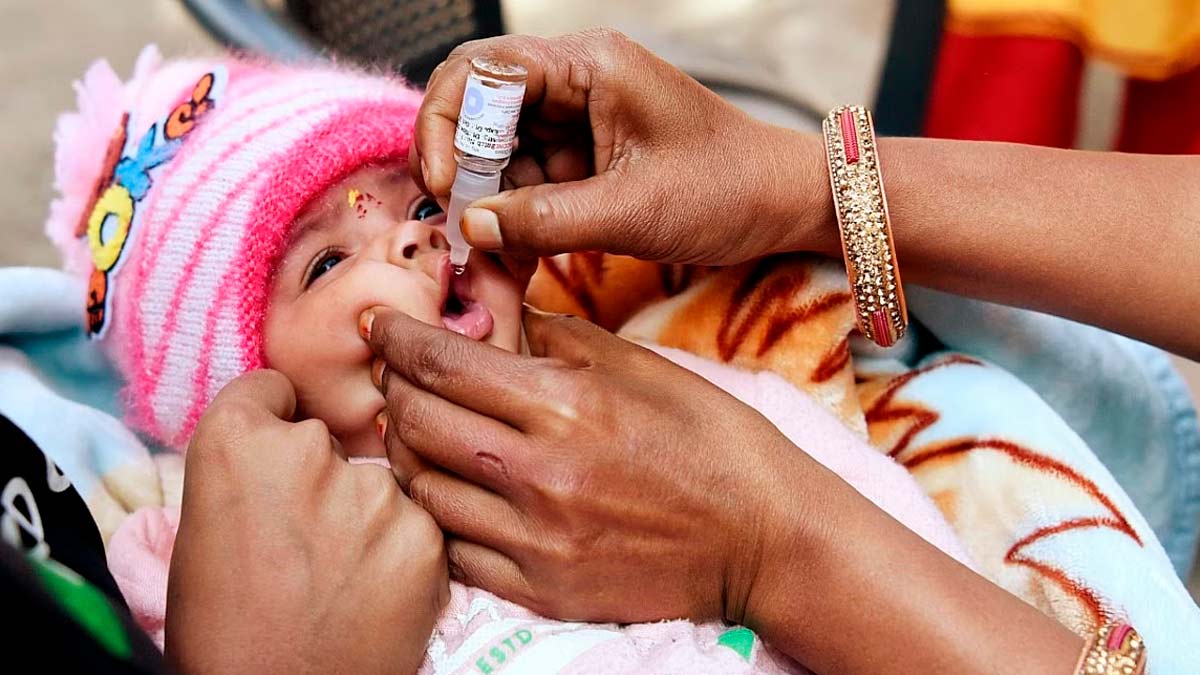
In a recent development that has raised concerns among health authorities, a two-year-old boy from Meghalaya has been diagnosed with vaccine-derived polio. The child, who hails from the West Garo Hills district, was initially diagnosed at a hospital in Assam’s Goalpara. This case marks a significant health alert, as it is the first polio case detected in India since the country was declared polio-free in 2014. The Union Health Ministry has confirmed that the boy does not have wild polio but a vaccine-derived strain, which has prompted immediate attention from both national and international health organizations, including the World Health Organization (WHO).
Table of Content:-
Understanding Vaccine-Derived Polio
Vaccine-derived polio, as the name suggests, originates from the oral polio vaccine (OPV) itself. The OPV contains a live, attenuated (weakened) virus that, when administered, replicates in the intestines for a short period, stimulating the immune system to build antibodies against the poliovirus. While the OPV has been instrumental in eradicating wild poliovirus in many parts of the world, including India, it carries a rare risk. In communities where immunization coverage is low, the weakened virus can circulate for an extended period, undergoing genetic changes. Over time, this mutated virus can regain its ability to cause illness, leading to what is known as vaccine-derived poliovirus (VDPV).

How Vaccine-Derived Polio Emerges
Vaccine-derived polio typically emerges in areas with low immunization rates. When the weakened virus from the OPV is excreted by a vaccinated individual, it can spread in the environment, particularly in places with poor sanitation. In communities with high vaccination coverage, this virus does not cause harm, as the population is protected. However, in under-immunized populations, the virus can continue to circulate, and as it passes from one person to another, it can mutate. If it circulates long enough, it may revert to a form capable of causing paralysis.
The case of the two-year-old boy in Meghalaya is a stark reminder of the importance of maintaining high immunization coverage, even in regions where polio has been eliminated. The detection of this vaccine-derived strain has led to increased surveillance and vaccination efforts in the affected areas to prevent further spread.
Also Read: Mpox Outbreak: More Than 1K New Cases Recorded In Congo In 7 Days, Reports CDC
The Global Context of Vaccine-Derived Polio
Vaccine-derived poliovirus is not unique to India; it has been detected in several countries, including the United States. In July 2022, a case of vaccine-derived poliovirus type 2 (VDPV2) was reported in an unvaccinated individual in Rockland County, New York. This case highlighted the global nature of the risk posed by VDPV, particularly in populations with low vaccination rates. The U.S. has used the inactivated poliovirus vaccine (IPV) exclusively since 2000, which does not contain a live virus and, therefore, cannot cause vaccine-derived polio. However, the global eradication of polio requires the use of OPV in many parts of the world, as it is the most effective tool for stopping the spread of the virus.
India's Journey to Being Polio-Free
India was declared polio-free by the WHO in 2014 after years of concerted efforts to eliminate the disease. The last case of wild poliovirus was reported in 2011. The country’s polio eradication campaign involved millions of health workers who vaccinated children across the country, even in the most remote areas. The success of this campaign was largely due to the widespread use of OPV, which not only protected individuals from polio but also helped to stop the transmission of the virus in the community.
The detection of vaccine-derived polio in Meghalaya does not mean that India’s polio-free status is at risk. However, it does underscore the need for continued vigilance. High vaccination coverage must be maintained to prevent the spread of both wild and vaccine-derived polioviruses. The Union Health Ministry, in collaboration with WHO and other partners, is taking steps to address this case and ensure that similar incidents do not occur in the future.
Bottomline: The Importance of Vaccination
The case of the two-year-old boy from Meghalaya is a reminder of the delicate balance in polio eradication efforts. While the OPV has been crucial in eliminating polio in India, it also requires a well-maintained vaccination program to prevent the emergence of vaccine-derived strains. Continued public health efforts are essential to keep India and the world polio-free. This case should serve as a wake-up call to the importance of vaccination and the ongoing need to protect vulnerable populations from this and other preventable diseases.
Also watch this video
How we keep this article up to date:
We work with experts and keep a close eye on the latest in health and wellness. Whenever there is a new research or helpful information, we update our articles with accurate and useful advice.
Current Version